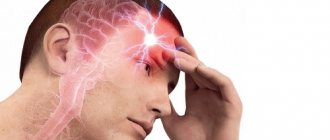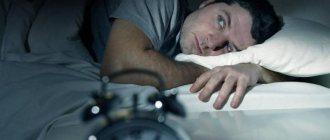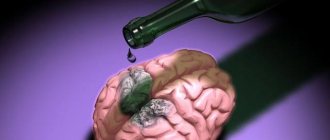Vegetative vascular dystonia is accompanied by disturbances in the functioning of the cardiovascular system. The heartbeat rhythm changes. There are jumps in blood pressure (either down or up). The tone of the walls of blood vessels is lost. Blood supply to the brain deteriorates. Breathing becomes difficult. Hypoxia develops (“oxygen starvation” of body tissues). The patient suffers from headaches, weakened concentration, decreased emotional background (anxiety and fear appear, developing into panic attacks).
Alcoholic drinks are an addiction for many people. Some of them, having fallen ill with vegetative-vascular dystonia, are interested in whether VSD and alcohol are compatible? Is it possible to drink with VSD?
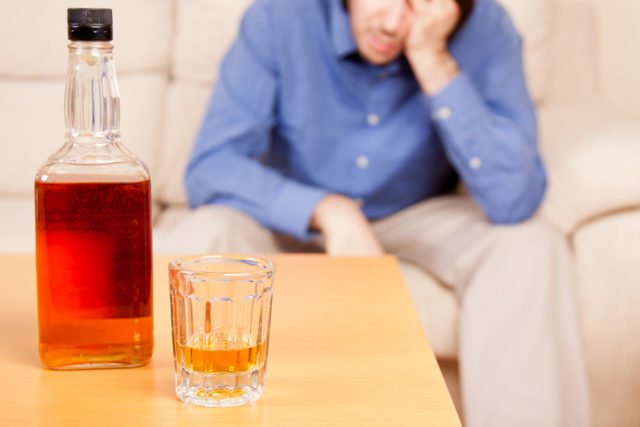
Doctors do not recommend drinking alcohol during VSD. Alcoholic drinks negatively affect the condition of internal organs. They worsen the functioning of the liver, kidneys, and genitourinary system. “Wear out” the myocardium and blood vessels. They have a destructive effect on the nervous system (a significant number of neurons that are excreted from the body with urine die off). Reduces the body's resistance to stress, physical and emotional stress. Alcohol symptoms are a hangover syndrome that harms well-being, health, muscle and mental tone.
Drinking a strong drink during vegetative vascular dystonia will aggravate your situation. Treatment will be complicated under the influence of alcohol. It is prohibited to drink medications with beer. Alcohol will react with components of the drug that may be incompatible. The patient will receive severe poisoning. A medical emergency may be required. Possible death.
How does alcohol affect the body of patients with VSD?

Vegetovascular dystonia (hereinafter referred to as VSD) is a medical problem that almost every modern person faces. VSD “makes itself known” by disruptions in the functioning of the autonomic nervous and cardiovascular systems. So, the classic symptoms of dystonia are:
- blood pressure surges;
- insomnia;
- migraine;
- decreased ability to work;
- apathy;
- irritability.
Important: medical statistics are disappointing - at least 80% of the adult population suffers from the above signs of VSD. Some autonomic disorders are also observed in schoolchildren (in particular, during puberty, when hormonal levels are “raging”).
The prevalence of the disease leads to the fact that many patients suffering from such unpleasant manifestations are interested in the question: is it possible to drink alcohol during VSD? To answer this, it is worth understanding what vegetative-vascular dystonia is, and what changes in the body of a dystonic patient can occur as a result of drinking alcohol.
This term usually refers not to a disease, but to a complex of symptoms, the appearance of which is associated with disturbances in the functioning of internal organs. The main cause of VSD, according to doctors, is the frantic pace of modern life, hence constant stress and overwork, which “hit” the nervous system.
Alcohol during sympathoadrenal crises
Sympathoadrenal crises are typical for patients with hypertensive VSD.
- During an attack, the adrenal cortex releases too much adrenaline and cortisol, which leads to vasoconstriction.
- There is a sharp increase in blood pressure, the heart rate accelerates, cold sweat is released, and the urge to urinate increases.
- Typical manifestations of this variant of the course of the disease are considered to be an unreasonable feeling of anxiety and panic.
Vasodilation after drinking alcohol reduces the risk of developing a panic attack. Alcoholic drinks can be consumed during sympathoadrenal crises, but with one caveat: the dose of alcohol should be minimal.
Doctors recommend drinking a glass of good wine, 50 grams of cognac, whiskey or vodka. This is enough to calm and relax. But if you understand that you cannot manage with the specified dose in company, it is better not to start drinking alcohol at all.
The body reacts to excessive amounts of ethyl alcohol in different ways. Which symptoms will come to the fore depends on the sensitivity of adenoceptors, the rate of ethanol neutralization and the activity of liver enzymes.
In case of an overdose, headaches, severe weakness appear, blood pressure and even temperature increase. Very often, after drinking alcohol in large quantities, an exacerbation of VSD is observed, and attacks last for several hours.

- redness of the facial skin or the formation of hyperemic spots against the background of too pale skin;
- profuse sweating, excessive salivation;
- activation of peristalsis of the lower intestines, which leads to repeated urges to empty it;
- weakness due to rapid decrease in pressure;
- darkening of the eyes;
- headache, dizziness;
- increased heart rate.
Types of dystonia
Symptoms of dystonia are different, because as the pathology develops, many systems (autonomic, respiratory, excretory) and organs begin to be involved: heart, kidneys, liver, brain.
The form of dystonia is:
- hypertensive with high blood pressure,
- hypotonic with low blood pressure,
- mixed in the case of manifestation of both types of disease in combination.
- tachycardia,
- panic attacks,
- tremor of hands, feet,
- pressure surges,
- flickering of flies before the eyes,
- dizziness and headache,
- chronic fatigue, weakness, apathy,
- loss of appetite up to absence,
- pulsation instability.
Dystonia often results from:
- stress,
- mental, physical imbalance,
- childbirth in women,
- bruise, brain injury.
Signs of VSD often appear in a complex. Patients want to relieve tension, relax, and drink alcohol. But the next day the symptoms may become more intrusive, and with the advent of a hangover, the reaction can lead to collapse or exacerbation, which is not easy to get rid of without treatment, especially for people who drink frequently.
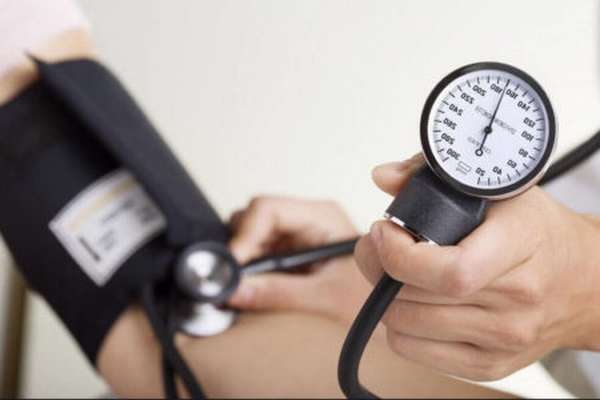
- lethargy,
- dyspnea,
- insomnia,
- noise, ringing in the ears,
- attacks of cardiac arrhythmia.
Hangover against the backdrop of VSD
The hangover that occurs in people after drinking alcohol, especially those with VSD, is much worse than in healthy people. For unpleasant symptoms to occur, a person with dystonia only needs to drink 100 grams of cognac the day before.
How does a hangover syndrome manifest itself in a dystonic patient?
- Disruption of normal sleep processes, expressed in insomnia or constant awakenings.
- The occurrence of headaches that appear under the influence of changes in blood pressure.
- Irritability that occurs for no apparent reason.
- Dehydration, which occurs due to the diuretic properties of alcoholic drinks, which reduces the volume of blood circulating through the vessels and increases the force of heart contractions. Frequent urination, especially at night, causes the body to rapidly lose fluid.
- The occurrence of disturbances in the respiratory system.
- The appearance of pain in the heart and discomfort behind the sternum.
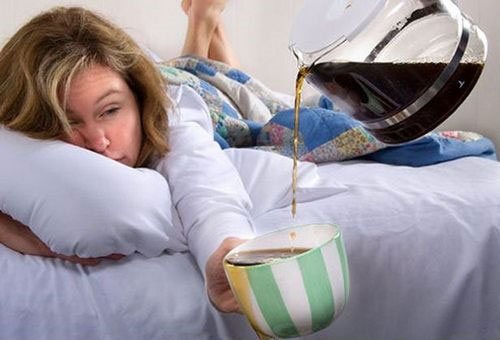
low blood pressure with a hangover
The development of unpleasant hangover symptoms occurs even in people who are absolutely healthy. This is facilitated by drinking alcohol with a lot of fatty, unhealthy foods. In addition, alcohol that enters the body, under the influence of metabolic processes, is converted into acetaldehyde, which is a poison and poisons the entire body. This substance breaks down into many toxins, which aggravate the course of vegetative-vascular dystonia.
- Disruption of normal sleep processes, expressed in insomnia or constant awakenings.
- The occurrence of headaches that appear under the influence of changes in blood pressure.
- Irritability that occurs for no apparent reason.
- Dehydration, which occurs due to the diuretic properties of alcoholic drinks, which reduces the volume of blood circulating through the vessels and increases the force of heart contractions. Frequent urination, especially at night, causes the body to rapidly lose fluid.
- The occurrence of disturbances in the respiratory system.
- The appearance of pain in the heart and discomfort behind the sternum.
The influence of alcoholic drinks
Drinking alcohol during VSD is a completely unacceptable process. The effect of ethanol on a healthy body is destructive, and a similar effect on dystonics greatly aggravates their condition.
As a rule, alcoholic drinks are consumed in the evenings. Within a few hours after drinking alcohol, often in the morning, a complex of negative symptoms appears.
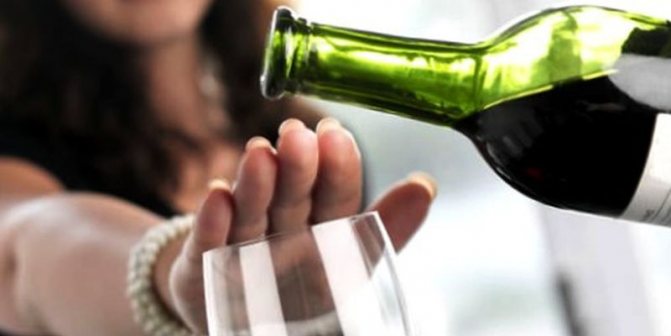
How does alcohol affect the human body?
- Pain in the head appears due to an increase in the usual blood pressure numbers.
- Hands begin to tremble, weakness is felt in the legs.
- Various disorders may occur from the gastrointestinal tract, including nausea, vomiting, and diarrhea.
- The person feels strong guilt, worries and worries.
- Normal sleep is disrupted (which in a person with VSD may be far from ideal): a dystonic person may wake up several times during the night, tormented by headaches and dizziness.
- Mental activity slows down, a person has difficulty solving primitive questions, thinking about simple things for a long time.
- A rapid heartbeat occurs, accompanied by shortness of breath and acute lack of air.
- The body rapidly loses fluid, resulting in signs characteristic of dehydration.
VSD and alcohol: is it possible to drink alcohol with vegetative-vascular dystonia
Vegetative-vascular dystonia (VSD) is an outdated and controversial definition, under which various symptoms are combined, often arising for different reasons. When interpreted literally, “vegetative-vascular dystonia” means a violation of vascular tone. The development of VSD is often caused by stress, poor nutrition and workaholism.
In 75% of cases, VSD is associated with neurology, although in some cases it can occur against the background of cardiovascular and other diseases.
Despite the absence of VSD in the International Classification of Diseases, some doctors still make a similar diagnosis. Moreover, patients of different ages may present with similar symptoms. For example, according to some statements, VSD is detected in 40% of the adult population. In such cases, related questions may arise such as whether VSD and alcohol are compatible.
Video: Alcohol. The harm of alcohol. Alcohol and hangover with VSD. Alcohol and Vegetative-vascular dystonia.
In 75% of cases, VSD is associated with neurology, although in some cases it can occur against the background of cardiovascular and other diseases.
Light drinks
What alcohol can you drink if you have VSD? Is it allowed to drink beer and low-alcohol cocktails? These questions are often of interest to patients.
People often consider beer to be a harmless drink because it contains a small percentage of ethanol. However, this is a deep misconception. It is beer and carbonated alcoholic drinks that are most dangerous for patients with VSD.
To fully experience the relaxing effects of ethanol, you need to drink a fairly large amount of light alcohol. As a result, approximately the same doses of ethyl alcohol enter the body as when drinking strong drinks. Beer hangover in patients with VSD is especially severe. This condition is accompanied by severe weakness, weakness and depression. It takes at least 48 hours for the body to fully recover.
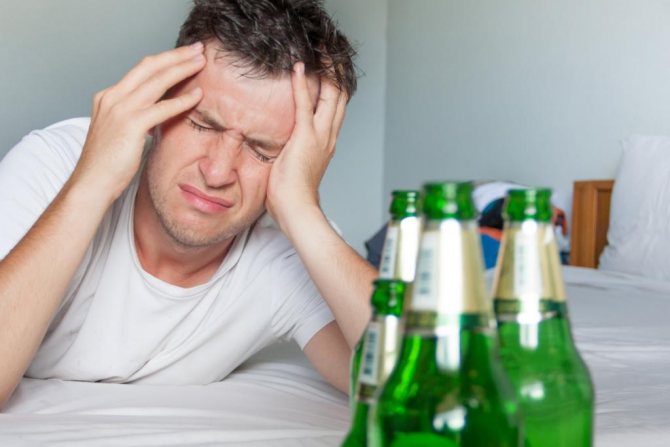
To fully experience the relaxing effects of ethanol, you need to drink a fairly large amount of light alcohol. As a result, approximately the same doses of ethyl alcohol enter the body as when drinking strong drinks. Beer hangover in patients with VSD is especially severe. This condition is accompanied by severe weakness, weakness and depression. It takes at least 48 hours for the body to fully recover.
Prevention of vegetative-vascular dystonia

Every healthy young person wants to know what can be consumed and what cannot. After all, some people report feeling better after taking small doses of alcohol. At the same time, the symptoms of the disease are slightly pronounced.
However, it is impossible to completely recover from VSD with alcohol, and not everyone can. The best way to overcome VSD and hangover is proper nutrition and a healthy lifestyle (exclude alcohol, tobacco, excessive exercise, etc.). Highly qualified doctors recommend doing fitness during the treatment period, strengthening the immune system, and jogging every morning.
There are also general recommendations against the symptoms of VSD:
- Rest and relax more.
- Active activities (sports, swimming pool, massage, etc.).
- In order not to provoke symptoms of VSD, you should not succumb to various negative emotions, stress, psychosis and anxiety.
- Dieting. The doctor should make a list of products that you can take without thinking about the consequences.
- Completely eliminate bad habits. Saw, drank or will drink alcohol - not used in your own vocabulary.
People often drink and don’t think about the consequences. To avoid health problems, you need to drink less alcohol, exercise more, and check with your doctor regularly.
Before choosing a clinic or seeing a doctor, read reviews about a medical professional and sign up only with the best specialists. Only qualified doctors will be able to accurately diagnose, diagnose the body, identify symptoms and prescribe highly effective treatment.
Is it possible to drink alcohol with VSD – is it good or bad?
The issue of alcohol consumption for many people is completely negative and unacceptable. For others, it is a completely positive product. Doctors adhere to the golden mean in this matter, considering some products (for example, dry red wine) even beneficial for the body, but subject to moderate consumption of a quality product.
Previously, wine and cognac could even be prescribed along with medicines for certain diseases. But at the same time, people still argue about whether it is possible to drink alcohol with VSD. The reason is that without the necessary medical education it is difficult to understand what effect an alcoholic drink has on the blood vessels of the brain. Therefore, it is difficult to fully understand whether it is possible to drink alcohol with VSD.
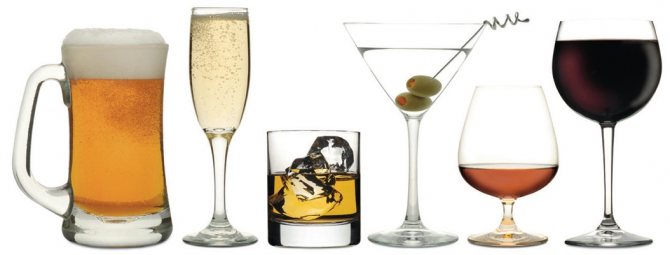
In addition, if you consume something during a state of stress, then the vascular wall narrows even more (which is already typical for VSD). Because of this, the blood supply to the brain deteriorates even more. Against this background, the symptomatic picture becomes even more pronounced.
How to help someone with a hangover
When a hangover has not yet set in, a person feels a sense of relaxation and is in high spirits. But after a few hours he feels all the unpleasant manifestations of this period.
To prevent a hangover, you should not drink alcohol. If it is not possible to comply with this rule, then the person will need to provide the following assistance:
- drink more often (Herbal tea, fruit drinks and compotes, cucumber pickle, rich meat broth);
- take any sorbent (for example, activated carbon);
- 12 hours after drinking alcohol, you can take a sedative (Phenazepam);
- to reduce headaches, drink No-shpa;
- in order to quickly remove toxins, use diuretics (Furosemide);
- Do not overexert yourself during the day, take a walk outside or relax at home;
- for heart pain, take Valocordin;
- if your blood pressure is low, drink a cup of green tea or not too strong coffee;
- You can take a cold shower or make a hot foot bath.
Doctors recommend contacting a medical facility if the hangover does not go away after 3 days.
Are VSD and alcohol compatible?
Vegetative-vascular dystonia (VSD) is an outdated and controversial definition, under which various symptoms are combined, often arising for different reasons. When interpreted literally, “vegetative-vascular dystonia” means a violation of vascular tone. The development of VSD is often caused by stress, poor nutrition and workaholism.
In 75% of cases, VSD is associated with neurology, although in some cases it can occur against the background of cardiovascular and other diseases.
Despite the absence of VSD in the International Classification of Diseases, some doctors still make a similar diagnosis. Moreover, patients of different ages may present with similar symptoms. For example, according to some statements, VSD is detected in 40% of the adult population. In such cases, related questions may arise such as whether VSD and alcohol are compatible.
Video: Alcohol. The harm of alcohol. Alcohol and hangover with VSD. Alcohol and Vegetative-vascular dystonia.
In 75% of cases, VSD is associated with neurology, although in some cases it can occur against the background of cardiovascular and other diseases.
Prevention

There is no way that would eliminate the harmful effects of alcohol on the body, therefore, as a preventive measure and to minimize the harmful effects, it is tedious to follow the following rules:
- Change your views on diet. Increase the amount of products containing glycine. You can use synthetic drugs containing glycine, but why do it? If you can find it in natural foods.
- Phototherapy. You can take special decoctions to lower blood pressure, for example, hawthorn flowers, or, on the contrary, use St. John's wort to stimulate.
- Sedative effect of tincture. Choose only natural tinctures; it’s okay if they are made with alcohol. A minimal amount will only have a beneficial effect without causing harm. About 30 drops per day will help calm the nervous system and distract from anxious thoughts. But there is no need to combine alcohol with such tinctures; there will be no benefit from them.
- Sports activities. Movement during VSD has an extremely positive effect on all life support systems of the body.
In any case, you need to consult with your doctor; you should not take risks and self-medicate.
Prevention of vegetative-vascular dystonia
Every healthy young person wants to know what can be consumed and what cannot. After all, some people report feeling better after taking small doses of alcohol. At the same time, the symptoms of the disease are slightly pronounced.
However, it is impossible to completely recover from VSD with alcohol, and not everyone can. The best way to overcome VSD and hangover is proper nutrition and a healthy lifestyle (exclude alcohol, tobacco, excessive exercise, etc.). Highly qualified doctors recommend doing fitness during the treatment period, strengthening the immune system, and jogging every morning.
